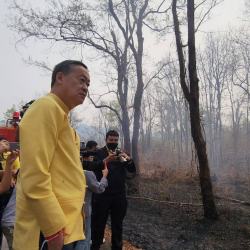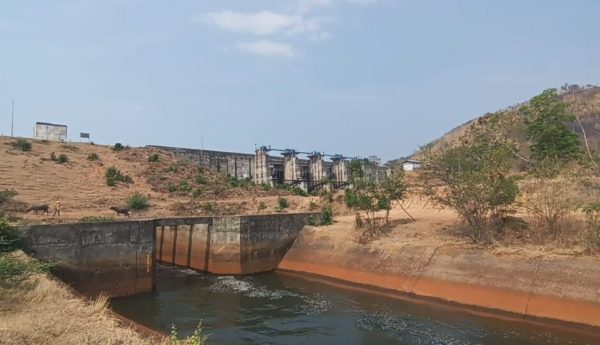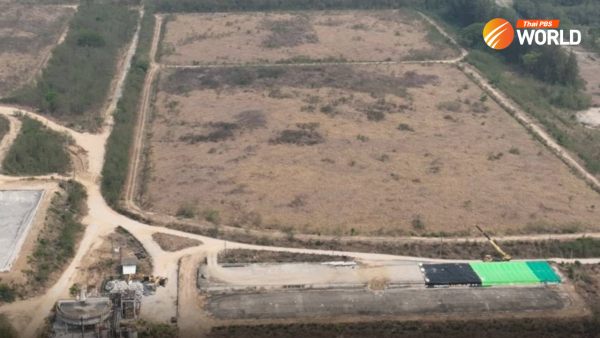Former forest chief offers advice on controlling northern forest fires

As forest fires rage in several northern provinces, resulting in the accumulation of PM2.5 in the atmosphere, former deputy prime minister Plodprasop Suraswadi has offered some advice, based on how he successfully fought forest fires when he was the director-general of Forest Department over two decades ago.
Writing in his Facebook post today, Plodprasop said he was in Chiang Mai last weekend when Pita Limjaroenrat, former Move Forward party, was also there to observe fire-fighting operations, and he offered some recommendations for how to control the forest fires in the northern region.
Pita reportedly talked about the timeline of forest fires in Thailand, water supply and fire fighters, as well as logistics problems.
Plodprasop said Pita was right about water supply and logistics, but overstated the significance of “water banks” and “fire hawks” (fire fighters).
He recalled that, when he was the chief of the Forest Department in 1998, he set up a fire control office, which was subsequently closed down. He also formed rapid deployment teams, called “fire tigers”, who could descend from a hovering helicopter to fight fires on the spot. He also set up fire-fighting units in all vulnerable areas, with villagers being mobilised in support.
Moreover, he said that helicopter landing pads were built on mountains and equipping with water tanks for use by fire fighters, resembling Pita’s concept of “water banks”. There was also the acquisition of fire-fighting brooms and a fleet of about 200 pickup trucks for rapid response operations.
More importantly, Plodprasop said that his instruction was that all the officials concerned, from the top to bottom, must concentrate on just one thing – controlling fires within three days or face immediate transfer.
“Believe it or not, forest fires reduced significantly,” he claimed.
The former deputy prime minister said that the PM2.5 problems in Bangkok and other central provinces last monthwere largely due to forest fires in Cambodia and the domestic burning of sugarcane and rice waste, compounded by moisture from the sea.
He said the current PM2.5 problem in northern provinces is, however, largely being caused by smoke blown from Myanmar and forest fires within the country, adding that the severity of the problem depends on high-altitude air flow from China, which acts like a cone over northern mountains, obstructing air circulation.
Meanwhile, low- and mid-altitude winds bring humidity and heat, resulting in rain which may cause disruption to the “cone” and the accumulated air-borne pollutants to disperse, he explained.
He also said that all the inspection trips by senior people in the government or publicity by local administration officials do not help in fire control.
“The only way to control forest fires is to be right on the spot to deal with the problem head-on,” said Plodprasop, adding that he does not mean to criticise anyone in particular, but would like to offer his advice “because I am the person who knows most about forest fires.”






